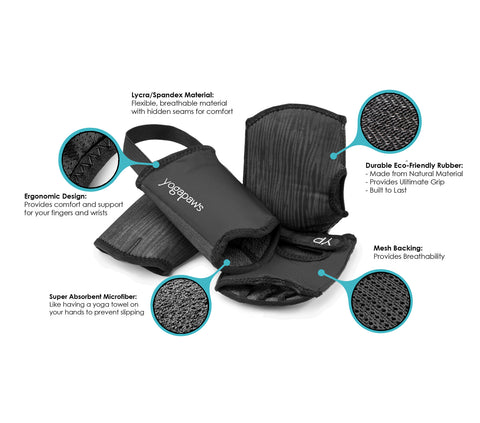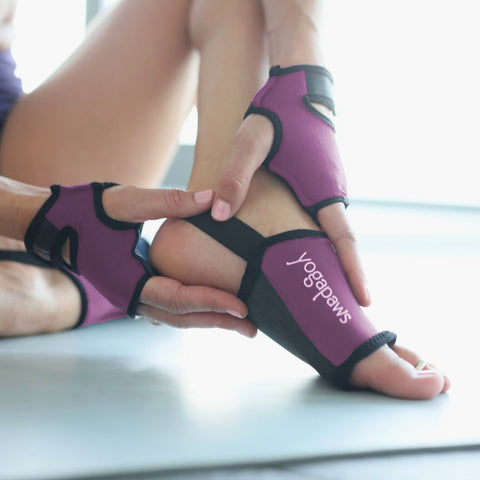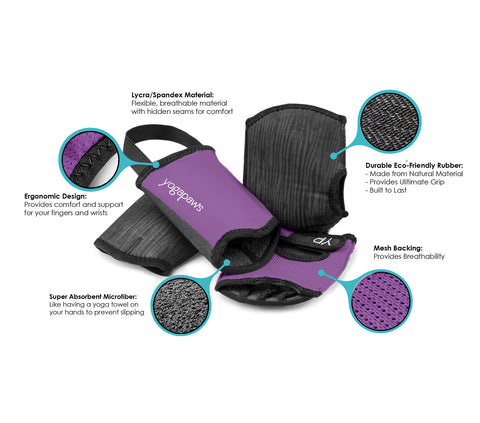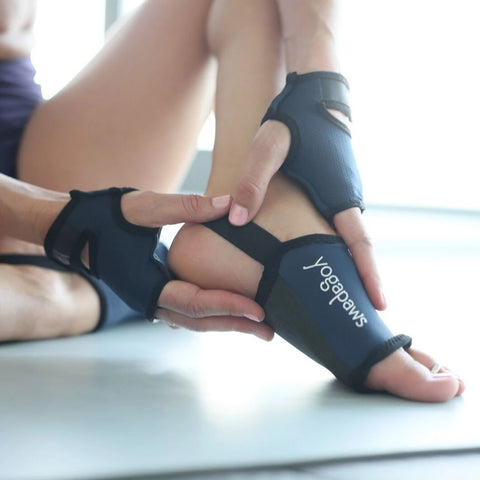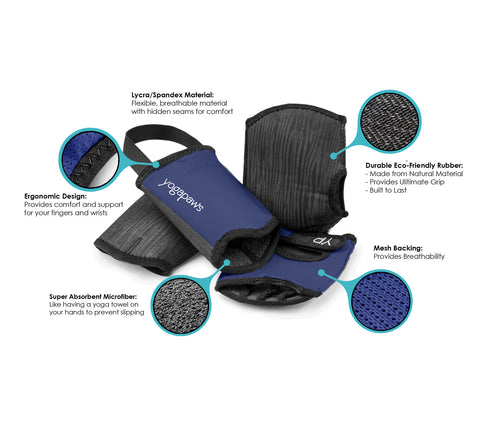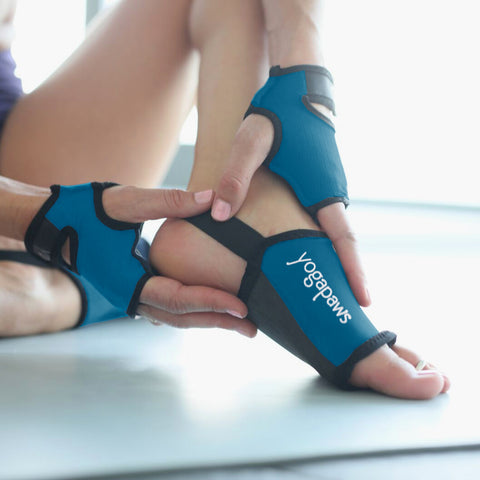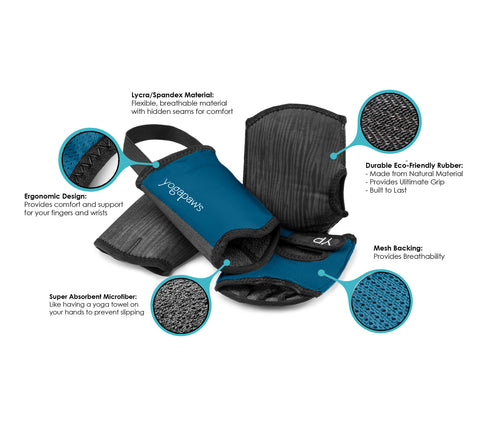Posted on January 13 2018
As you prepare for your yoga practice, you might start to focus on your breath, stretch your hamstrings or loosen your shoulders. One area that’s probably not top of mind as you warm up is your core. But the combined strength and suppleness of the muscles that control your torso affect everything from balance work to full extension in standing poses and proper alignment in seated asanas. It’s no wonder this part of the body is called your powerhouse.
The muscles in your abs and back do a lot more than you think. This isn’t just about looking good on the beach. These are the muscles that stabilize you as you come into standing balances such as Vrksasana (Tree Pose).
 A strong core also makes these poses feel easier than if you rely only on your limbs to hold you up. Being able to activate your center connects your whole body, making your arms and legs work as one unit.
A strong core also makes these poses feel easier than if you rely only on your limbs to hold you up. Being able to activate your center connects your whole body, making your arms and legs work as one unit.
Consider Plank Pose. Engaging the core by thinking about pulling the front body up toward the spine allows you to stiffen your body so that the hamstrings can lengthen and you can start to turn your heels under. All of that distributes your weight more evenly down the entire body rather than making your shoulders and wrists literally do all of the heavy lifting. It also makes the pose more accessible.
To feel the difference, come to Plank Pose with the hands under your shoulders or just slightly ahead of them. Purposefully allow your front body to sag toward the floor as your spine rounds down. Set your knees down into Table Top pose for a few breath cycles. Then return to Plank, this time collecting the core up toward the back and explore how integration creates a new ease in the pose.
Yoga is a great way to help you cultivate that feeling. While your practice doesn’t build core strength through repetition the way other training methods (such as Pilates) do, it helps your core become much stronger functionally. For example, each time you move into Virabhadrasana I (Warrior I), think about lifting your body from your pelvic floor and using your core muscles to support your spine as you raise your arms and reach away from your legs. Concentration on your core muscles can subtly intensify most asanas. The next time you come into Balasana (Child’s Pose), walk your hands far out in front, claw the mat with your fingers and, drawing your navel to your spine, move into the pose by pushing your glutes back toward your heels. Keep your spine long and core engaged as you lengthen back. Then, breathe deeply. As you exhale, focus on emptying out the front body and drawing the core upward to the spine. Enjoy that clean, “together” feel that comes from your body and breath working efficiently in harmony.
To take your core curriculum to the next level, try these poses that target your center. Here are a few to try:
 |
Chaturanga Dandasana (Four-Limbed Staff Pose) Benefits: This pose activates your entire center. How to do it: Start in Plank Pose. Firm your center. On an exhale, lower your body by bending your arms. The “eyes” (insides) of your elbows should face forward and your elbows should graze your sides as you lower down. Pull your heels under and keep your legs straight. Lift your navel to your spine. Hold for 10 to 30 seconds, then release either by lowering your body to your mat or by stretching into Adho Mukha Svanasana (Upward-Facing Dog Pose). |
 |
Vasisthasana (Side Plank Pose) Benefits: This pose works your obliques, muscles on the sides of your waist that stabilize your body as you twist. How to do it: Begin in Adho Mukha Svanasana. Put your weight into the outer edge of your left foot. Place your right foot on top of your left. Rotate your body upward. Align your body so that you are balanced on your left foot and left hand. Make sure your left hand is slightly ahead of your left shoulder. Think of lifting from your left side. Keep your right shoulder back. If you want to, you can lift your right leg and clasp it with your right fingers. Stay in the pose for 15 to 30 seconds, then release back to Adho Mukha Svanasana and repeat on the other side. |
 |
Setu Bandha Sarvangasana (Bridge Pose) Benefits: This pose engages your back and abs at the same time. How to do it: Begin lying face up on your mat. Bend your knees in and put the soles of your feet on the floor. Put your arms along your sides. Exhale and press your hips toward the ceiling, peeling one vertebra at a time off the mat. Keep your legs parallel and no more than hip-width apart. (Placing a block between your knees can help keep proper alignment). You should end with your back slightly arched. Keep your throat relaxed. Think of pulling your hipbones toward your ribs. Hold the pose for 30 seconds to one minute, then release. |
 |
Tadasana (Mountain Pose) Stand Tall. Visualize your abdominals coming together to lift your torso off your hips as you practice. Try to create length between your bottom rib and your pelvis. Draw your navel in and up |
 Focus your energy. Often, tension in your limbs is misplaced. As you practice, keep energy in your core. If you feel like you are falling backward or your shoulders start to get tense, see if engaging your abs helps that relax.
Focus your energy. Often, tension in your limbs is misplaced. As you practice, keep energy in your core. If you feel like you are falling backward or your shoulders start to get tense, see if engaging your abs helps that relax.
As you find your center in yoga class, think about how you want to take that through your life. Just as in yoga, having a strong core—muscular or emotional—keeps you stable and allows you to adapt to new demands.
Next time you hit the mat, set your core as your intention. Think about the connection between your physical center and your emotional one. You will probably find the strengthening both helps make you the strongest you can be.


